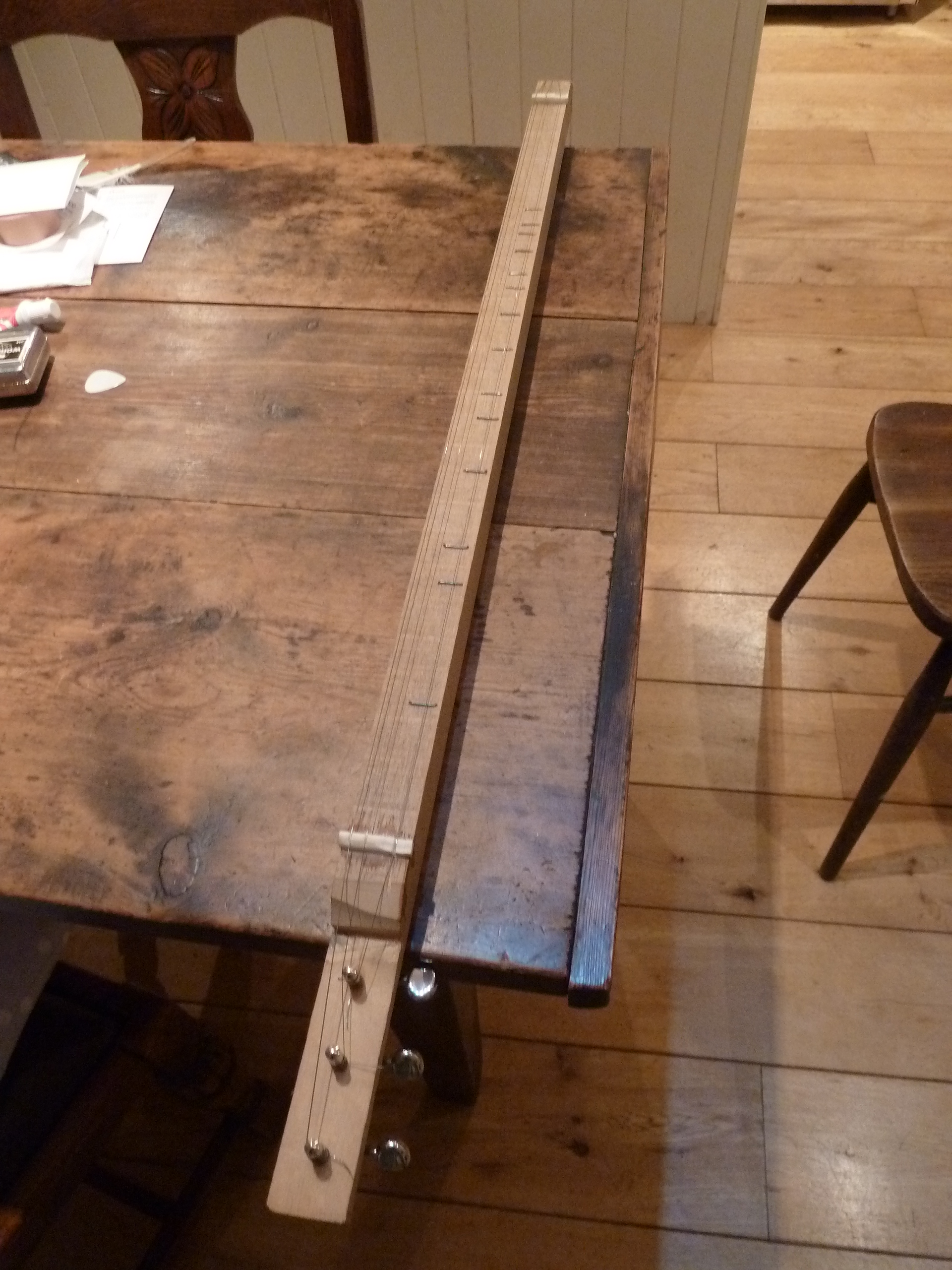First Dulcimer - fretting by ear
My good lady had a couple of TV progs she wanted to watch this evening, so I thought I'd take the opportunity of a couple of quiet hours to build my first dulcimer 
In the 'Laying out Frets' discussion I had suggested that old style staple frets could possibly be laid out by ear using harmonics and reference to the perfect 5th between the bass drone and melody string. So I had a plan to give fretting by ear a go.
I picked a tree stake out of the garden shed and went to work. I had a very simple design in mind - just a stick with a lump taken out of one end for some old tuners and staple frets. It only took aboutan hourto cut the stake to length - take out a section for the tuners - drill and fit them - drill a hole andbang some dowl into the other end to take the strings - cut a couple of bits of bone for a nut and bridge - make 3 strings from piano wire (#8 bass and 2 x #4 middle and melody) and put them on. My scale length was about 28".
Now came the fun part - laying out the frets!
I had decided not to use a tuner at all or any form of measurement. I tuned the bass string to 'a good note' and the middle and melody a 5th above using the 5th harmonic on the bass string. Just as an aside, my 'good note' turned out to be about25 cents flat of D when I checked it after I had finished the whole instrument. The bass wire just felt and sounded 'right' at that pitch.
Once I had the melody string a 5th above the bass string (by ear using the 5th harmonic on the bass string)I then used a piece of the wire I would make the frets from (18 gauge steel music wire 0.040) to find the 3rd fret d note on the melody string and marked its position with a pencil. Then I marked the 7th fret against the octave harmonic. Then the10th fret 2 octaves up from the bass string. And so on. Each time before I placed a fret markerI checked that the bass and melody were still at a perfect 5th and judged my fret placement by ear against the bass string drone or its harmonics. Once my marks were finished I made up the frets by bending the wire around some linesman's pliers and banged them in. I didn't make a very neat job of the fretting but this was a test of a system rather than a fancy instrument. I half expected the whole thing to be a disaster!!!
My biggest surprise was the position of the first fret. Using this system the nut to first fret space was less than the space between the first fret and the second fret - just like you see on old dulcimers!!!!! The nut to 1st fret was 2.75" and the 1st fret to 2nd fret was 3" yet the whole thing played OK? I'm sure this was because of the height of the nut I had which meant the first note pulled sharper than the second. When I did a check with an electronic tuner after finishing I had pretty much every fret bang on. A couple were a few cents out from equal temperamentbut sounded OK (meantone temperament?) So, from doing this quick experiment I would have to say that it is perfectly possible to get a nicely playable instrument very quickly and without any measurement or fret calculators if you use the perfect 5th between the bass and melody as a reference to set every fret.
It took 2 hours start to finish to build.
Here is a photo of the instrument (well its a tree stake with strings attached  )
)

But the biggest surprise of all was what happened when I put my stick on the kitchen table. Just listen to this!!! 



